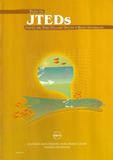Study on Juvenile and Trash Excluder Devices (JTEDs) in Brunei Darussalam
Abstract
SEAFDEC Training Department, in cooperation with the Brunei Darussalam Department of Fisheries conducted experiments on Juvenile and Trash Excluder Devices (JTEDs) during the year 2000 in Brunei Darussalam waters. The objective being to study the catch and release efficiency of juvenile and trash fish devices using differences in the escape opening of JTEDs. Two types of JTED namely a rigid sorting grid (bar spacing 30 mm.) and a two codend type (50/35 mm. codend mesh size) were designed. Five operations were carried out using the rigid sorting grid JTED and two codend types respectively. Separation efficiency by size in the same species between a body length (i), in the codend and body length (j) in the cover net is defined as yi + yj -1, where yi is the recovery ratio in the codend, that means the proportion of the catch number retained in the codend and yj is the recovery ratio in the cover net.
The recovery ratio from the codend of the rigid sorting grid JTED (bar space 30 mm.) of Nemipterus sp. with a body length 13.0 cm. was 0.83 while the recovery ratio in the cover net having the same body length was 0.17 which indicates that the thread fin bream group with a body length of 13.0 cm. can enter the codend rather than go into the cover net. For a two cover codend trawl net (50-35 mm. codend mesh size) the recovery ratio in the codend was 0.39, while the recovery ratio in cover net was 0.61, which indicates that this fish species may go into the cover net rather than remain in the codend. A comparison between the two types of JTED and the rigid sorting grid type with a bar spacing of 30 mm. shows that thread fin bream with a body length 13.0 cm has a higher recovery ratio in the codend than in two-cover codend type. This implies that the separation performance of the sieving grid of the JTED depends on the design of the releasing device, grid bar spacing and codend mesh size as well as the swimming ability of each species in the net.
xmlui.dri2xhtml.METS-1.0.item-edition
2nd Ed.Citation
Chokesanguan, B., Ananpongsuk, S., Siriraksophon, S., & Hamid, I. A. (2003). Study on juvenile and trash excluder devices (JTEDs) in Brunei Darussalam. Samut Prakan, Thailand: Training Department, Southeast Asian Fisheries Development Center.

